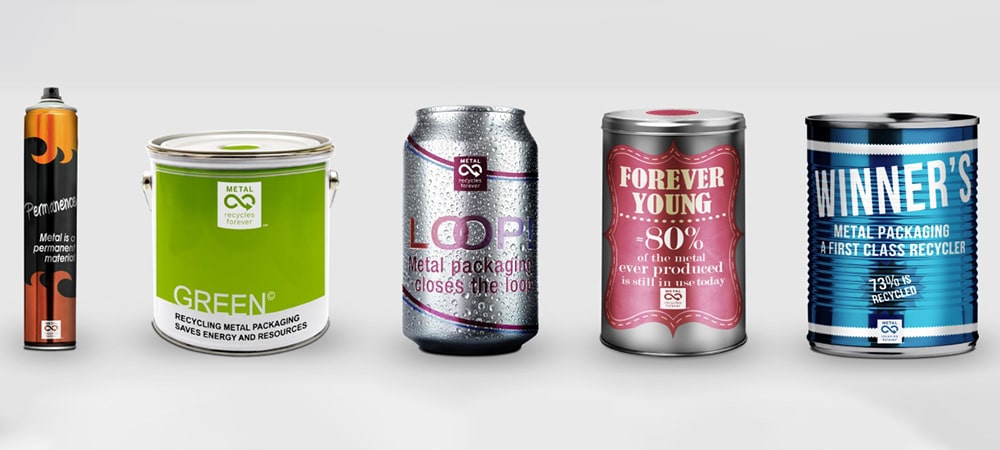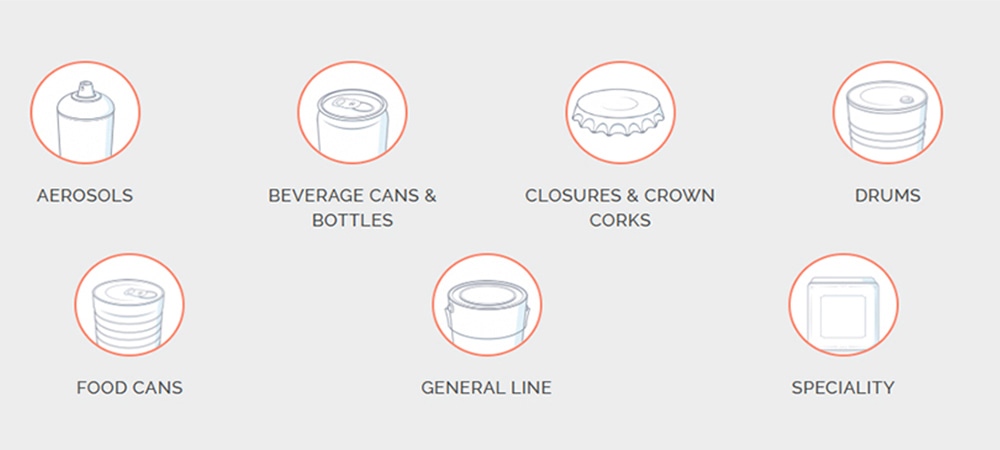Metal packaging, produced from aluminium, steel, or tinplate (electrolytic tin-coated steel), is a vital solution across retail, wholesale, commercial, and industrial sectors. Its versatility allows packaging of virtually any product—from beverages and food to health, beauty, and industrial goods—while providing superior protection, sustainability, and supply chain efficiency.
1. Global & Asia Market Overview
Each year, approximately 98 billion metal packaging units are produced for a wide range of industries, including beverages, food, health & beauty, household, and industrial products.
On average, each EU citizen consumes 4 units weekly, reflecting the high adoption and reliability of metal packaging solutions.
Market Distribution by Segment:
| Segment |
Annual Production (Units) |
Typical Applications |
| Beverages |
40B |
Aluminium cans, bottles, resealable ends |
| Food |
30B |
Standard & shaped food cans, butter boxes, tinplate gift boxes |
| Health & Beauty |
15B |
Aerosols, dry shampoo cans, specialty containers |
| Household & Industrial |
13B |
Push & pull cans, drums, closures |
China/Asia Perspective:
The Asian metal packaging market, especially China, is experiencing rapid growth driven by e-commerce and premium consumer packaging demands. Local brands increasingly adopt tinplate for tea, mooncake, and confectionery gift boxes, leveraging its excellent barrier performance, rigidity, and high-end printability. Furthermore, China is actively developing metal recycling and collection systems, supporting sustainable packaging adoption.

2. Technical Advantages of Metal Packaging
Metal packaging provides unique protective and functional properties, making it a preferred choice for brand owners and fillers:
- Barrier Protection: Superior defense against oxygen, moisture, and light, extending shelf life and preserving product quality. Tinplate in particular provides excellent rigidity and corrosion resistance, ideal for traditional canned foods and high-end gift packaging.
- Durability: Resistant to mechanical damage during storage and transport, ensuring supply chain integrity.
- Safety Compliance: Conforms to international food and product safety standards.
- Printing & Branding: Tinplate’s smooth surface allows high-quality lithography and embossing, making it a preferred material for premium branding.
Sustainability:
- Recycling Rates: Global steel/tinplate packaging recovery exceeds 70–80%, while aluminium cans are among the highest-recycled beverage containers, reaching up to 90% in certain regions.
- Circularity: Both tinplate and aluminium can be recycled indefinitely without quality loss.
- Carbon Footprint Reduction: Using recycled steel or aluminium significantly reduces packaging carbon footprint.
Tinplate-Specific Advantages:
- Excellent weldability and sealing performance
- Distinct metallic texture enhances premium product perception
- Design flexibility through necking, shaping, and embossing
3. Diverse Product Applications
Beverage Sector
- Aluminium cans and bottles: Lightweight, corrosion-resistant, ideal for carbonated drinks.
- Innovations: 360 END™ improves opening safety and resealability; Strawster™ provides integrated straw convenience.
- China/Asia Note: Aluminium beverage cans dominate e-commerce and modern retail segments, meeting consumer demand for convenience and sustainability.
Food Sector
- Standard and shaped cans: Suitable for ready-to-eat meals, dairy products, and specialty foods.
- Tinplate Applications: Essential for traditional canned foods, tea gift boxes, mooncakes, and confectionery, providing superior barrier, rigidity, and printability.
- Premium Packaging: Butter boxes, Orbit, PT-51 designs for high-end products.
·
Health & Beauty
- Aerosols and shaped cans: Enable precise dosing and aesthetic appeal.
- Example: Digistripe technology integrates temperature-sensitive visual indicators, enhancing consumer safety and product experience.
Household & Industrial
- Functional designs: Push & pull systems, drums, closures.
- Applications: Paints, lubricants, household chemicals, and tools.

4. Innovation and Design Trends
Metal packaging continues to evolve through technical innovation and creative design:
- Combining engineering precision with imaginative design produces products that are visually appealing and technically robust.
- Innovations address specific consumer or brand needs::Digistripe technology: Visual temperature indicator improves safety and quality assurance. Resealable ends (360 END™): Enhance convenience and freshness.
- Sustainability-driven design: Lightweight tinplate cans and refillable containers are increasingly adopted in China and Asia to support circular economy goals.
5. Manufacturing & Supply Chain Considerations
Key considerations for professionals and brand owners:
- Material Selection: Steel/tinplate vs aluminium based on product sensitivity, weight, and cost.
- Tinplate Production Techniques: Welded seams, necking, and shaping allow flexible designs with cost efficiency.
- Barrier Coatings: Internal coatings prevent corrosion and maintain product quality.
- Supply Chain Efficiency: Modular and stackable designs optimize logistics, reducing transport damage.
- China/Asia Perspective: E-commerce growth in China drives demand for lightweight, strong, visually appealing tinplate packaging with efficient supply chain handling.
6. Summary (Technical Professional Conclusion)
With advances in aluminium, steel, and tinplate container design, metal packaging offers unparalleled protection, sustainability, and flexibility across industries.
Professionals and brand owners should carefully consider barrier properties, internal coatings, and supply chain efficiency when selecting packaging solutions. By understanding these technical factors, businesses can make informed decisions that enhance product quality, extend shelf life, and align with sustainability goals.


